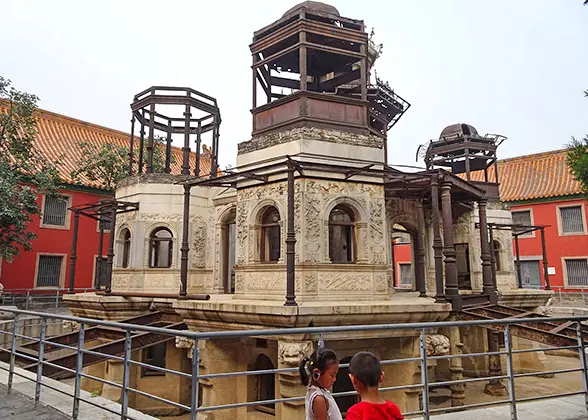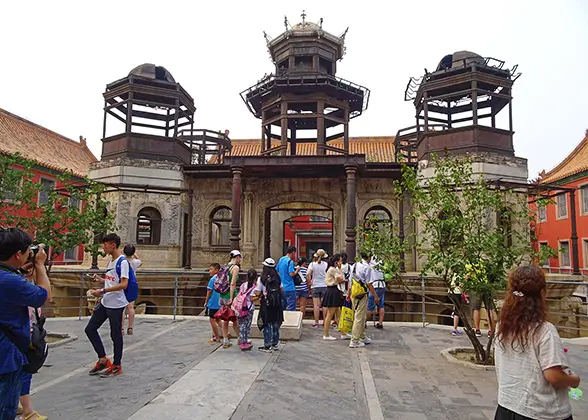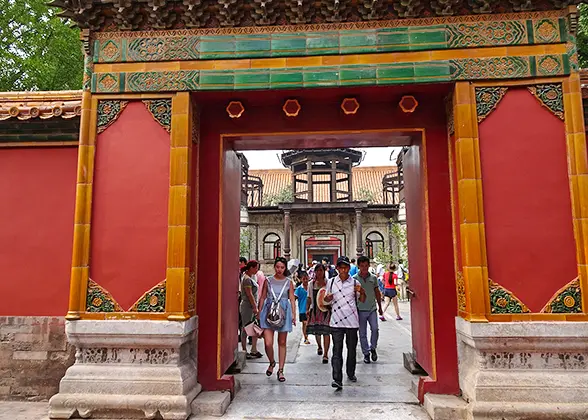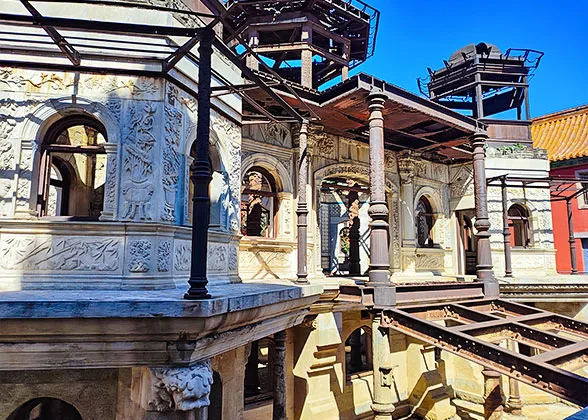Palace of Prolonging Happiness (Yanxigong)
The Palace of Prolonging Happiness is one of the Six Eastern Palaces in the Forbidden City, once home to imperial concubines. It attracts numerous visitors by its unique Western-style main hall.
The current Palace of Prolonging complex features a gate, a Western-style central hall, and surrounding buildings on three sides, with the three-story main hall “Bower of the Spirit Pool” as the key highlight.
What impressed visitors most is how the main structure's Western design differs completely from the red walls and golden roofs typical of the Forbidden City. The third floor is crowned with five domed iron pavilions, while the lower two levels are constructed from white marble and supported by Roman columns adorned with intricate carvings, giving it the appearance of a European palace.
Equally remarkable is its unfinished and decayed state: rust beams, discolored marble, glassless windows, pavilion roofs left half-finished or missing entirely, and even sprouting weeds. This isn't due to neglect but rather an intentional preservation of the structure's final form in the history.
What to See Today in the Palace of Prolonging Happiness
The current Palace of Prolonging complex features a gate, a Western-style central hall, and surrounding buildings on three sides, with the three-story main hall “Bower of the Spirit Pool” as the key highlight.
What impressed visitors most is how the main structure's Western design differs completely from the red walls and golden roofs typical of the Forbidden City. The third floor is crowned with five domed iron pavilions, while the lower two levels are constructed from white marble and supported by Roman columns adorned with intricate carvings, giving it the appearance of a European palace.
Equally remarkable is its unfinished and decayed state: rust beams, discolored marble, glassless windows, pavilion roofs left half-finished or missing entirely, and even sprouting weeds. This isn't due to neglect but rather an intentional preservation of the structure's final form in the history.
|
|
History of Palace of Prolonging Happiness
Initially called the Palace of Longevity, the complex used to be a standard two-courtyard layout with five rooms in the main hall, three side rooms each on the east and west, and a same layout in the backyard. In 1686, it was renamed the Palace of Prolonging Happiness.
In 19th century, the Palace suffered fires many times, with the 1845 fire being the most severe, which left only the palace gate standing and took away a concubine's life. The frequent fires sparked widespread speculation. Some said that the palace was in an unlucky position of fengshui theory, while others suspected the blazes were deliberately set by disfavored concubines seeking an escape.
|
|
In 1909, Empress Dowager Longyu (1868~1913) reconstructed the complex. The new main structure Bower of the Spirit Pool was more called "Water Palace" for its symbolic design. Inspired by the fengshui principle that "water conquers fire", the structure incorporated water elements. For example, its ground floor was envisioned to function as an aquarium for observing fish and algae, while walls and columns featured elaborate carvings of aquatic plants and creatures.
However, lack of funding, the construction was halted in 1911. In 1917, the Water Palace suffered damage to its northern section when warlords, angered by the last emperor Puyi's (1906~1967) attempted restoration of the monarchy, bombed the Forbidden City. Following the establishment of the Palace Museum in 1925, the Palace of Prolonging Happiness was preserved in its uncompleted state.
Who Lived in the Palace of Prolonging Happiness?
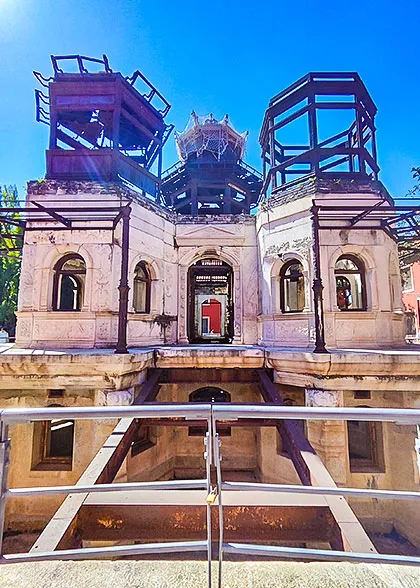 |
| Palace of Prolonging Happiness |
In Qing Dynasty (1644~1911), the emperor's consorts were ranked into 8 hierarchical tiers—the higher the rank, the greater the favor they enjoyed. The Palace of Prolonging Happiness primarily accommodated lower-ranking consorts who were often overlooked by the emperor, leading to its nickname the "Cold Palace".
Concubine Tian (?~1845): Gentle by Nature, Perished in Fire
Known for her kindness, Consort Tian treated palace maids like sisters. When one maid fell ill, she repeatedly inquired about her health and even suggested the maid delay returning to duty until fully recovered. Unluckily, during the devastating 1845 fire at Prolonging Happiness Palace, she suffered severe injuries and died two months later.
First-class Attendant Ling (1816~1897): Demoted for Punishing Maids
Ling (1816~1897) once resided in the Palace of Prolonging Happiness, titled the First-class Attendant, the 2ed last rank among concubines. But she was demoted to the lowest rank for frequent personal punishment to the maids.
Between 1839 and 1840, Ling disciplined four maids severely for various offenses. For instance, Ling slapped Daniu after she accidentally stepped on and killed a kitten, then later struck her with bamboo for breaking a porcelain basin. Similarly, Ling administered forty harsh blows to another maid caught stealing silk.
See more Six Eastern Palaces
- Last updated on Oct. 15, 2025 by Jally Zhang -
